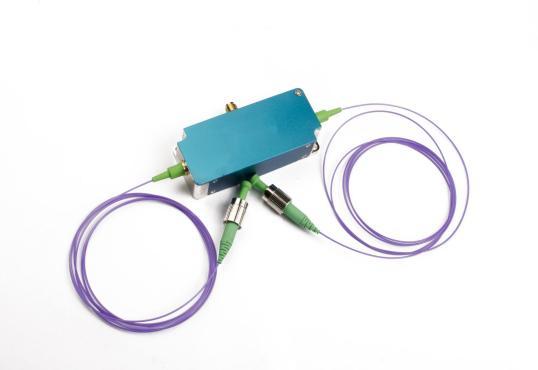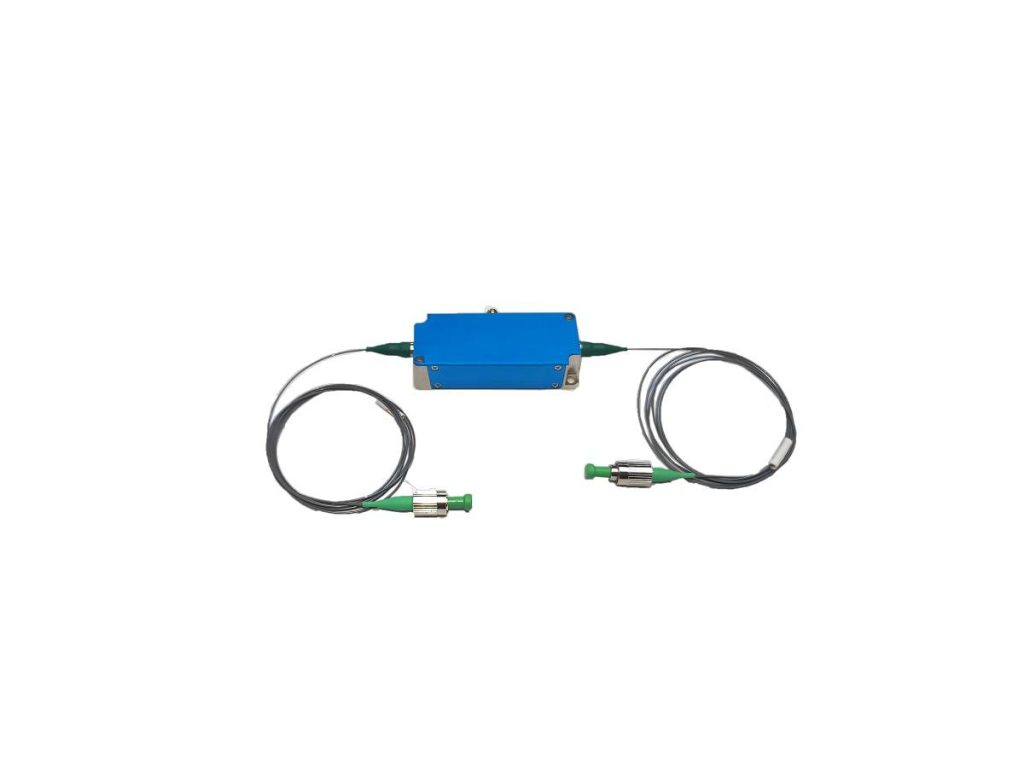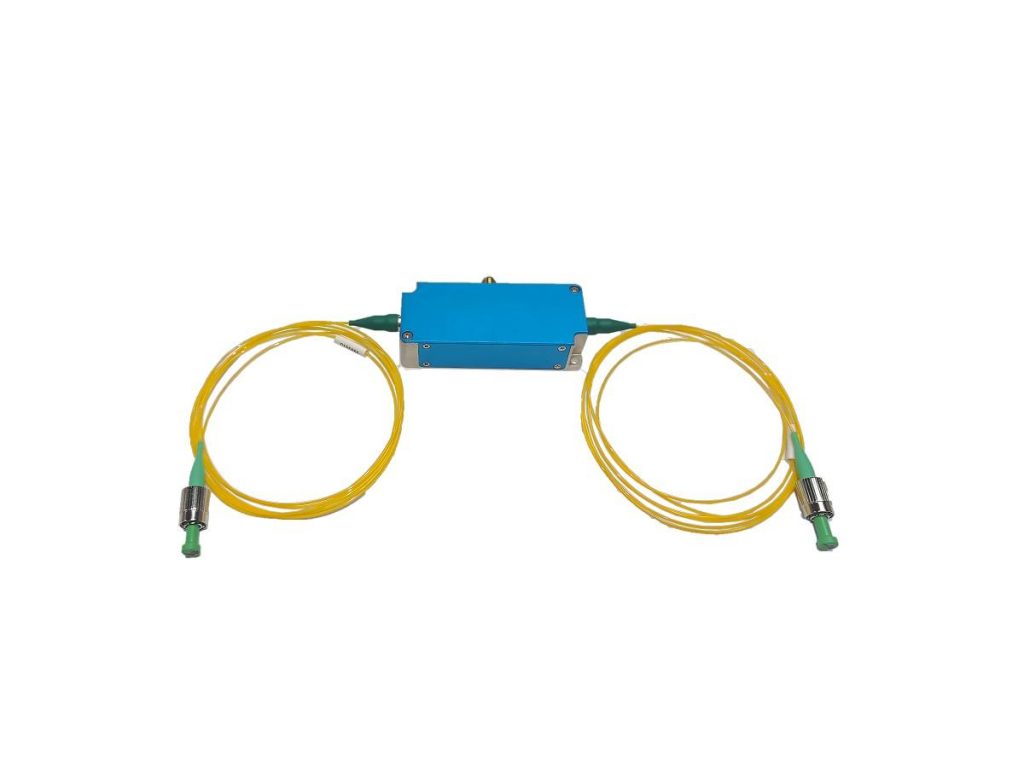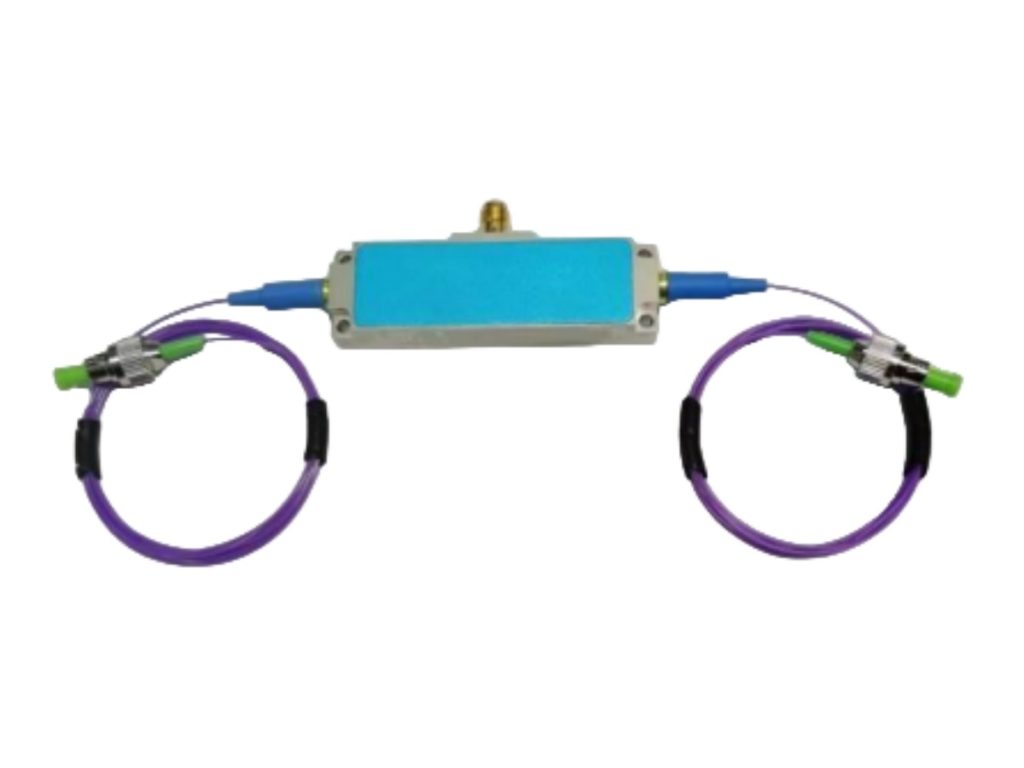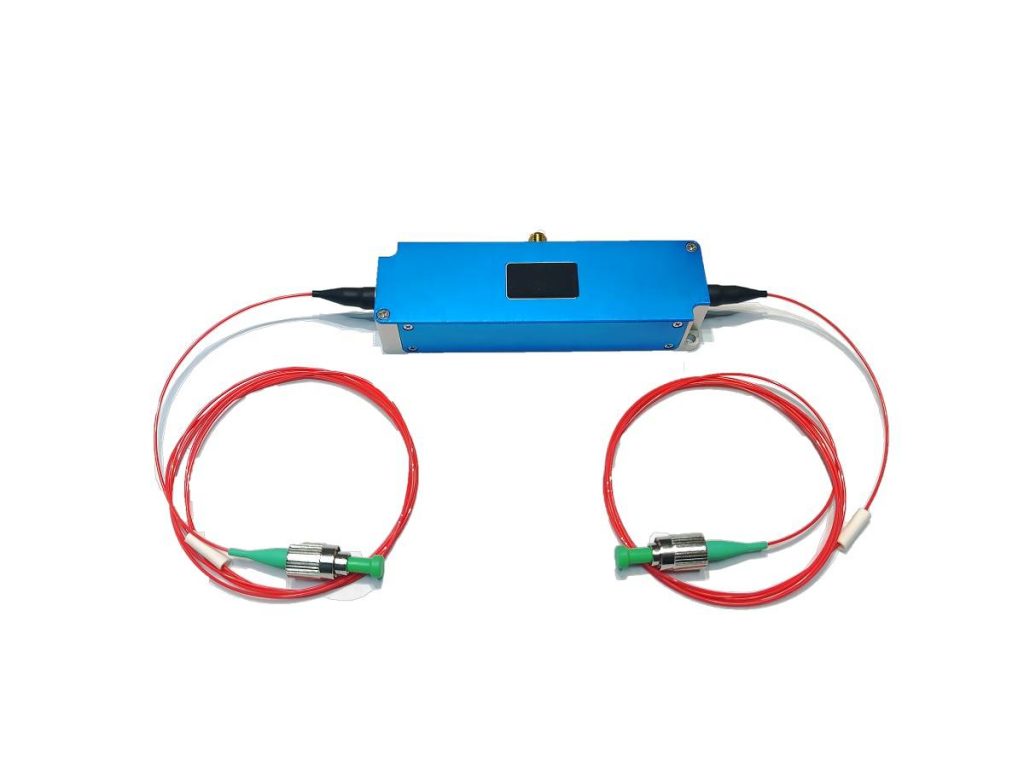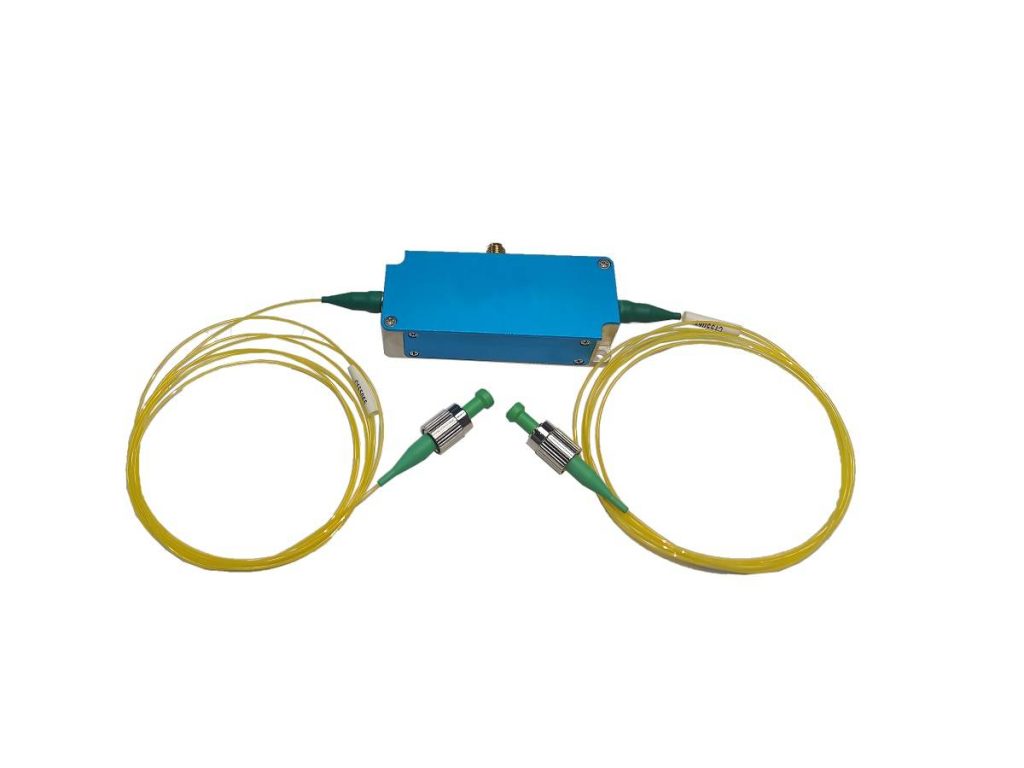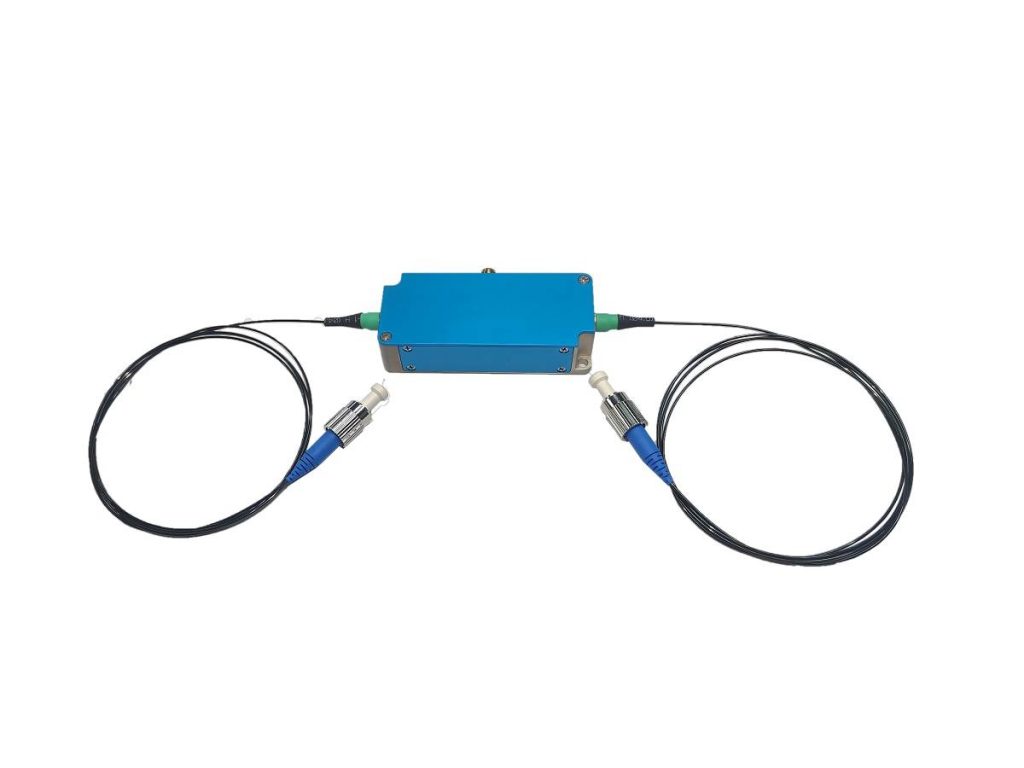Application of Acousto-optic Modulators in Distributed Sensing Technology
In the ever-evolving field of science and technology, information acquisition is perhaps one of the most pivotal aspects. As one of the crucial divisions, sensing technology has traditional point-based acoustic sensors long served a useful purpose, especially within defined contexts. However, their cost-effectiveness and coverage limitations render them increasingly impractical when it comes to large-scale applications requiring continuous monitoring of sound fields. To overcome these challenges, distributed sensing technology has emerged, with distributed acoustic sensing (DAS) technology being particularly noteworthy. Simultaneously, the acousto-optic modulator (AOM), as a significant photonic device, precisely controls various parameters of light and plays a key role in optical communication, lidar, spectroscopy, and other fields.
This paper aims to explore the fundamental principles and advantages of DAS technology, introduce the working mechanism and characteristics of AOMs, and focus on elucidating the potential value and innovative applications arising from the combination of these two technologies, providing new ideas for the future development of photonic sensing and control.

Principles of Distributed Acoustic Sensing (DAS) Technology
1. What is Distributed Acoustic Sensing (DAS)?
Distributed Acoustic Sensing (DAS) is a sophisticated technique that uses an optical fiber as a sensor medium to monitor acoustic disturbances continuously along the length of the fiber over its entire length which allows for real-time data collection and analysis across vast distances. Unlike traditional point sensors, DAS systems acquire acoustic field information distributed along the entire optical fiber, achieving true “linear” or “areal” (through fiber winding) acoustic sensing by emitting light pulses into the fiber and analyzing the backscattered light signals.
2. How Does Distributed Acoustic Sensing Work?
The core philosophy of DAS technology considers utilizing light scattering processes taking place in the optical fiber, particularly Rayleigh scattering. When coherent light pulses enter an optical fiber, they encounter microscopic density variations that give rise to weak backscattered light called Rayleigh scattering. The phase of this scattered light is closely related to the incident light and the position information of the scattering points.
The vibrations of external sound waves on the optical hearing aid cause slight changes in temperature around it and thereby changes in the density and refractive index of the fiber medium homogeneously and thus in harmony with myriads of points within optic fibers traversing its body. The net effect is to disturb not only some spatial coordinates but also physical quarter parts shift units relating to the sectioning scale described elsewhere as scatter points. DAS systems accurately measure and analyze these phase variations in the back-scattered Rayleigh light with highly sensitive coherent optical detection methods.
Particularly, Coherent Optical Time Domain Reflectometry (COTDR) or Phase-sensitive Optical Time Domain Reflectometry (Φ-OTDR) techniques are typically utilized to attain sound wave sensing. Φ-OTDR technology is currently the prevalent method employed in the DAS technology. It involves offering thin pulses of coherent light and using interference principles at the receiver to track the phase difference among Rayleigh-scattered light that returns from different times. Since the optical fiber experiences acoustic disturbance along its route, the phase difference between light returned from the next scattering points is not constant. Such a phase change is related to the sound wave intensity and frequency. From demodulation of such phase changes, acoustic field information dispersed along the fiber length can be obtained.
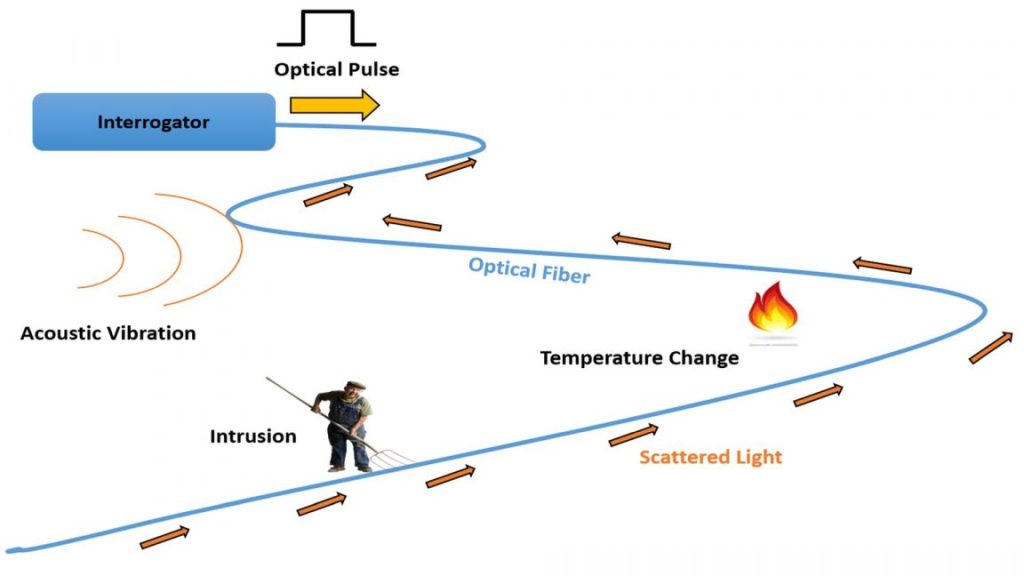
3. Key Characteristics of DAS Technology
DAS technology offers significant advantages over traditional acoustic sensors:
- Distributed Measurement Capability: This is the most prominent feature of DAS. Based on a single optical fiber, continuous monitoring can be conducted over long distances of tens to hundreds of kilometers. This capability significantly decreases the number of required sensors for deployment as well as the maintenance costs associated with them.
- Sensitivity and Dynamic Range: Modern DAS systems possess high sensitivity, which enables them to detect even weak acoustic signals. At the same time, these systems have a wide dynamic range, which allows them to adapt to acoustically diverse environments with varying intensities.
- Spatial Resolution and Sensing Distance: The spatial resolution of DAS is two meters or even sub-meter, enabling precise sound source localization. The maximum sensing distance is related to the fiber optics’ attenuation limit, together with system design considerations.
- Frequency Response: As with other sensor types, DAS systems can capture sound wave signals containing various frequency components within a wide frequency range.
4. Typical Application Areas of DAS Technology
Due to its unique advantageous features, DAS technology has shown great potential in applications such as: oil and gas pipeline safety monitoring, perimeter security surveillance, traffic flow analysis, seismic monitoring as well as geological exploration. These scenarios require vast amounts of information concerning continuous monitoring and real-time acquisition of acoustic data.
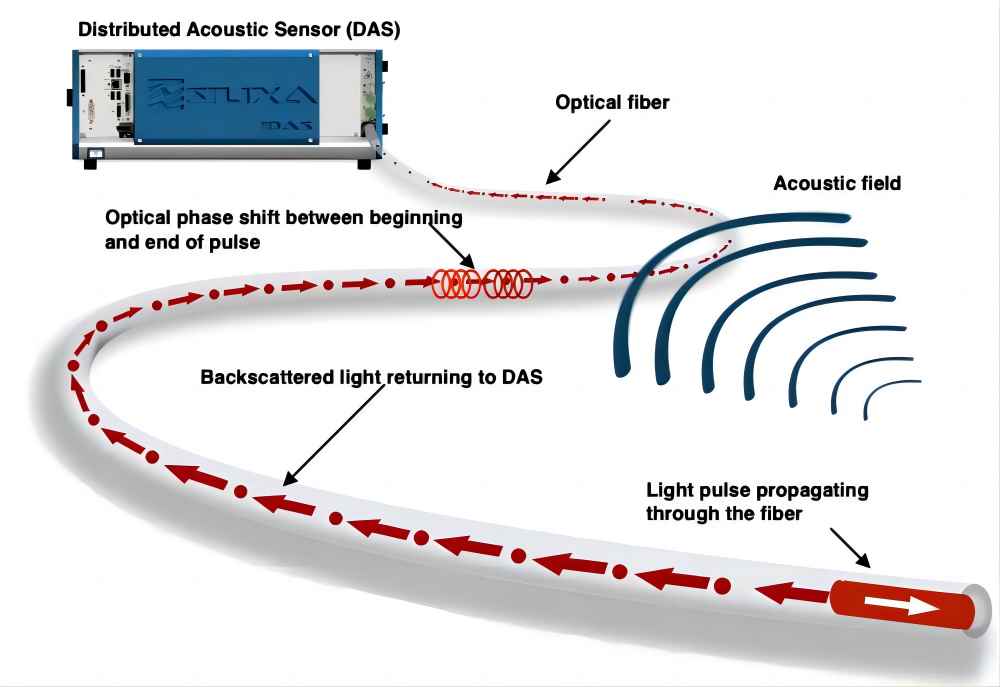
Principles and Characteristics of Acousto-Optic Modulators (AOMs)
1. Basic Concepts and Working Principles of Acousto-optic Modulator (AOM)
Acousto-optic modulator is an instrument that makes use of the coupling between light waves and sound waves in a specific medium to change parameters such as intensity or frequency of output of a light beam. It works on the principle of the acousto-optic effect in which an incident sound wave in an optically transparent material alters its density periodically producing a travelling refractive index grating.
If a light beam hits such an acousto-optic medium, it gets diffracted because light gets diffracted by mechanical gratings. The angle of propagation and power of the diffracted light beam are definite functions of the incident light’s wavelength, frequency, and intensity, parameters, and acousto-optical medium properties of the employed sound wave. In most cases, laser diodes serve as AOMs in regimes of Bragg diffraction where only selective orders of diffractions possessing sufficient energy are amplified. Furthermore, these systems facilitate real-time adjustments based on the RF signal transmitted through colorless optical amplifiers replacing rudimentary piezoelectric elements thus streamlining application process without hampering drive signals or input frequencies/power levels necessary for modulation.
2. Key Performance Parameters of AOMs
Key parameters for evaluating AOM performance include:
- Modulation Bandwidth and Response Speed: As for the modulation bandwidth, it describes the frequency range of the signals which the AOM is able to modulate. The response speed indicates how fast the AOM can change in reaction to an input signal change.
- Differaction Efficiency: This parameter measures the quantity of light incident upon a device that is transformed into a specific order of output, or diffracted light. This is an important measure to assess AOM performance and is referred to as diffraction efficiency.
- Operating Wavelength Range: Different AOMs have different acousto-optic medias resulting in varying effective ranges for their wavelengths of operation.
- Drive Voltage and Power Consumption: These parameters influence design considerations regarding power systems and driving circuits, as well as energy consumption for practical implementations of the AOM.
3. Traditional Application Areas of AOMs
AOMs, with their precise and fast light modulation capabilities, are widely used in laser switching, intensity modulation, frequency shifting, acousto-optic deflection, spectral analysis, optical fiber communication, and other fields. They are indispensable key components in modern photonics research and applications.
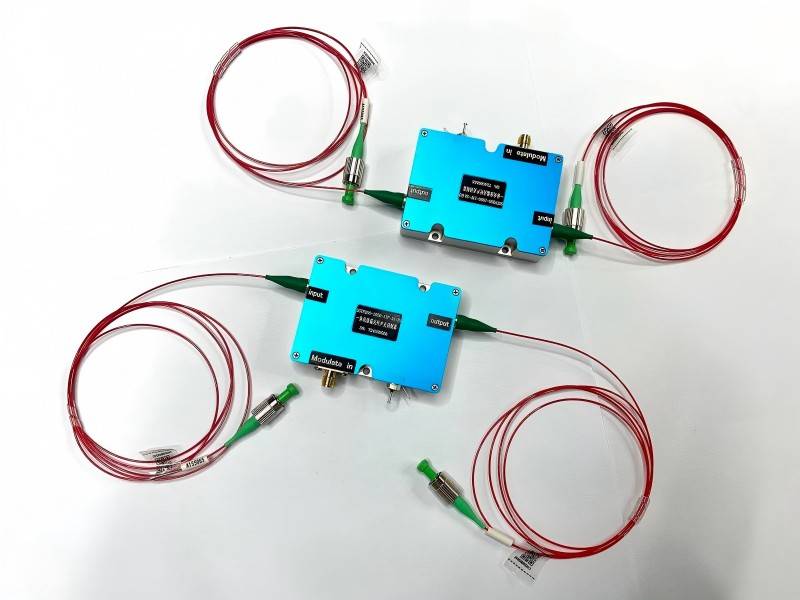
Potential Applications of Distributed Acoustic Sensing Technology in Acousto-Optic Modulators
Combining distributed acoustic sensing technology with acousto-optic modulators can open up new application areas and significantly enhance existing technologies.
1. Distributed Acousto-Optic Modulation: Utilizing DAS for Spatially Selective Light Modulation
Classical AOMs modulate the entire light beam equally and without spatial selectivity. But if one can insert sound waves locally at different locations in the optical fiber with DAS technology, then it becomes possible to modulate independently light beams passing through different zones of the fiber individually. As a case in point, distributed dynamic gratings are formed by combining miniature sound sources with photoacoustic-induced localized phonon generation at specific regions along the fiber. With a light signal traveling along the fiber, beams of light at varying positions are modulated by different sound waves, achieving different types of spatially selective intensity, phase, and other parameter control upon modulation. This type of distributed acousto-optic modulation enables advanced spatial control of light fields with particular precision control in applications such as:
- Optical Tweezers Arrays: Construction and manipulation of large-scale optical tweezers arrays for high-precision parallel tracking and control of microparticles are possible with distributed acousto-optic modulation to generate independent modulated light beams at various longitudinal positions along the fiber.
- Light-Sheet Microscopy: By the adaptive generation and scanning of light sheets in biological samples, 3D imaging is made possible when time-dependent patterned illumination is delivered at numerous points in the fiber.
- Reconfigurable Optical Elements: Dynamic lenses or gratings may be generated as a consequence of sound wave propagation in the optical fiber. In addition, DAS methods make it possible to achieve exact modifiable framing across the focused or diffracted characteristics via exact control over oral parameters like angle–within-defined limits of functional reconfiguration.
2. Utilizing Acousto-Optic Modulation to Enhance Distributed Acoustic Sensing
On the other hand, AOMs can be used as important elements in DAS systems to improve their performance.
- Enhancement of Brillouin Scattering Sensing: The use of AOM allows the input of sound waves with defined frequencies and power levels into optical fibers which build stronger stimulated Brillouin scattering signals. With sufficient parameters of the excitation sound waves, the sensitivity, spatial resolution, and measurement rate of Brillouin sensing can be refined enhancing temperature and strain measurements along fibers more precisely.
- Novel Distributed Acoustic Sensing Mechanisms: It is possible to develop new distributed acoustic sensing techniques using particular modulation pulses produced by an AOM which react with soundwaves within an optical fiber. For instance, utilizing specific frequency light generated from an AOM provides means to interact nonlinearly with external sound wave providing means to analyze changes in transmission or scattering characteristics enabling distributed sensing for external sound fields.
3. Possibilities for Integrated Photonic Devices
The integration of DAS technology and AOMs on the same photonic chip or optical fiber may yield more compact and flexible systems. For example, using the specific acousto-optic interaction properties of micro-structured or photonic crystal fibers along with micro-fabrication technologies makes it possible to integrate both distributed acoustic sensing and localized acousto-optic modulation on one optical fiber. These instruments are expected to offer significant utility in miniature photonics systems, lab-on-a-chip devices, and related technologies.
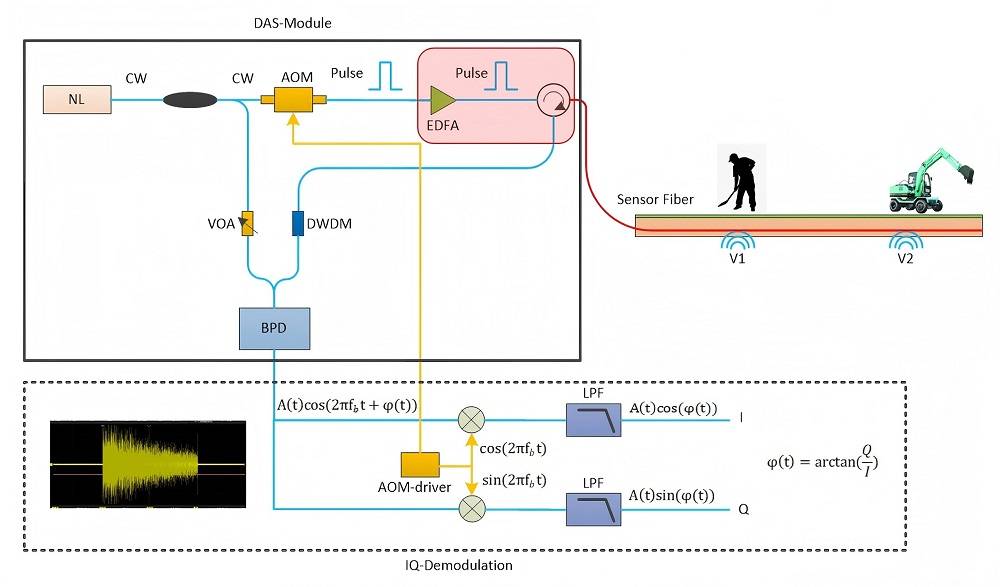
In Summary
With its unique distributed measurement capabilities combined with a high degree of sensitivity, distributed acoustic sensor technology has broad prospects for transmission application within acoustics. Acousto-optic modulators as precision tools for light beam control dominate in the area of photonics. The remarkable fusion of these two technologies not only allows spatially selective light modulation thus providing novel advances in light control and imaging but also enhances the functionality of distributed acoustic sensing providing new mechanisms and integrated concepts for developing sensors integrated into one photonic device.

